Schedule C Filers: Self-Employed Loan Calculation (no employees)
For a Schedule C filer with no employees, the calculation of the potential PPP loan amount is straightforward:
Step 1: Take the net profit from your 2019 Schedule C (line 31), up to $100,000
Step 2: Take the amount from Step 1 and divide by 12
Step 3: Multiply the amount from Step 2 by 2.5
For example, if the 2019 net profit of your Schedule C business was $120,000, the amount of your potential loan would be $20,833, computed as follows:
$100,000 / 12 * 2.5 = $20,833
An additional step is required for taxpayers that previously received an Economic Injury Disaster Loan (EIDL) between January 31, 2020 and April 3, 2020. To understand the interplay between the EIDL loan and the PPP loan, please refer to this article.
Schedule C Filers: Self-Employed Loan Calculation (with employees)
The calculation for a Schedule C filer with employees contains an additional step when determining the potential PPP loan amount:
Step 1: Take the net profit from your 2019 Schedule C (line 31), up to $100,000
Step 2: To the amount from Step 1, add the company’s aggregate payroll costs from 2019 (for a discussion of what is included in payroll costs, see additional comments below or refer to this article)
Step 3: Take the amount from Step 2 (net profit from Step 1 + aggregate payroll costs from Step 2) and divide by 12
Step 4: Multiply the amount from Step 3 by 2.5
For example, if the 2019 net profit of your Schedule C business was $120,000 and you paid wages of $80,000, the amount of your potential loan would be $37,500, computed as follows:
($100,000 + $80,000) / 12 * 2.5 = $37,500
There is some uncertainty as it relates to a Schedule C filer that employs his or her spouse. The question is whether the spouse’s wages are added to the payroll costs in Step 2, or if they are included with the net profit of the business in Step 1 and thus subject to the $100,000 limitation?
Assume the same facts as above, only that $40,000 of the $80,000 wages are wages paid to a spouse. If the spouse’s wages are lumped together with the net profit of the business, the potential loan amount would be reduced to $29,167, computed as follows:
($100,000 + $40,000) / 12 * 2.5 = $29,167
Assuming the taxpayer and his or her spouse file a joint tax return, whether the spouse is employed or not does not change the amount of ultimate employment taxes paid. As such, it is my opinion (until further guidance is provided) that the spouse’s wages would be combined with the net profit of the company and would be subject to the $100,000 limitation.
Schedule C Filers: PPP Loan Forgiveness
In order to qualify for loan forgiveness, the loan proceeds must be used for the following:
- Payroll costs, including employee salaries, commissions, or similar compensations
- Costs related to the continuation of group health care benefits during periods of paid sick, medical, or family leave, and insurance premiums
- Payments of interest on any mortgage obligation
- Rent (including rent under a lease agreement)
- Utilities
- Interest on any other debt obligations that were incurred before receipt of the loan proceeds
- Owner compensation replacement
With the exception of owner compensation replacement, none of this is new information. A Schedule C filer has to use their loan proceeds the same way any business would. However, they are granted an additional element of loan forgiveness – the owner compensation replacement.
Owner compensation replacement is calculated by taking the 2019 Schedule C net profit, subject to a $100,000 limitation, and multiplying the amount by 8/52.
Assume the following:
- 2019 Schedule C net profit equal to $150,000
- 2019 wages paid to employees of $280,000, none of which are paid to the taxpayer or spouse, and none of which exceed $100,000 for any one employee
Based on the above, the potential loan amount equals $79,167 (($100,000 + $280,000) /12 * 2.5).
Let’s assume the only qualified expenses used with the loan proceeds were $50,000 of wages. Under this assumption, the eligible loan forgiveness is $65,385, which consists of the $50,000 of wages and $15,385 of owner compensation replacement (calculated by multiplying the $100,000 by 8/52). The remaining $13,782 would be subject to the loan terms and rate (1%).
Self-Employed Loan Forgiveness – Other Considerations
Owner compensation replacement included as payroll costs for loan forgiveness:
One requirement for loan forgiveness is that 75% of the loan proceeds be used towards “payroll costs”. Although not explicitly stated in the SBA guidance, the general consensus is that the owner compensation replacement is included as part of “payroll costs.”
Loan proceeds can only be used for expenses also incurred in 2019:
The new guidance indicates that self-employed individuals can only use the loan proceeds for expenses they were already paying for in 2019. For example, if a self-employed filer did not pay any rent in 2019 but they did in 2020, that rent paid will not qualify for loan forgiveness, as it was not an expense that had been incurred in the prior year.
Health insurance and retirement contributions:
When determining the potential loan amount available to a Schedule C filer, employer health insurance contributions reported on Schedule C, line 14 and employer retirement contributions reported on Schedule C line, 19, both on behalf of employees, are included as part of the payroll costs computed in Step 2 above. They do not add to the $100,000 per employee limitation.
What about self-employed health insurance premiums or self-employed retirement contributions? Should those costs be included on top of the Schedule C net profit (which is limited to $100,000), thus increasing the potential loan amount? The answer to that is not clear and has not been addressed.
Until additional guidance is provided, it is my opinion that those costs will not be included in determining the loan amount for a Schedule C filer. For such a taxpayer, self-employed health insurance and retirement contributions are not deducted on Schedule C but rather on Schedule 1 of the Form 1040. As such, they indirectly impact the amount of the loan one could receive by virtue of not decreasing the Schedule C net profit, which is the starting point in determining the potential PPP loan amount available.
Documentation required for loan application:
Information on what documentation is required is also spelled out in more detail. The 2019 Schedule C is referenced repeatedly, and that form is the document on which most everything is determined. Whether or not a 2019 tax return has been filed, banks will most likely be requesting a Schedule C. Thus, it is in the taxpayer’s best interest to have that form prepared as soon as possible. Additional documentation mentioned are a Form 1099-MISC detailing nonemployee compensation, an invoice, bank statement, or a book of record that establishes (1) that the taxpayer is self-employed, and (2) that the taxpayer was in operation on or around February 15, 2020.
Partnership Entities & Partners
The new guidance clarifies that partners cannot submit their own PPP loan application as a self-employed person. Rather, the partnership is the one that should file for the PPP loan and include the self-employment income of general, active partners as payroll costs on which the loan amount is determined. This hurts those partners who have not had their allocable partnership income reported as self-employment income in box 14a of their Schedule K-1s.
What about S-Corporations and their Shareholders?
Like any other business entity, an S-Corporation can apply for a PPP loan and receive loan forgiveness assuming the loan proceeds are used for the expenses listed above. In contrast to a Schedule C filer, the net profit of an S-Corporation is not included in the determination of the potential loan amount. This is due to the fact that the net profit of an S-Corporation is not subject to employment tax while the net profit of a Schedule C business is. This hurts those S-Corporation owners who historically have not paid themselves a reasonable salary.




